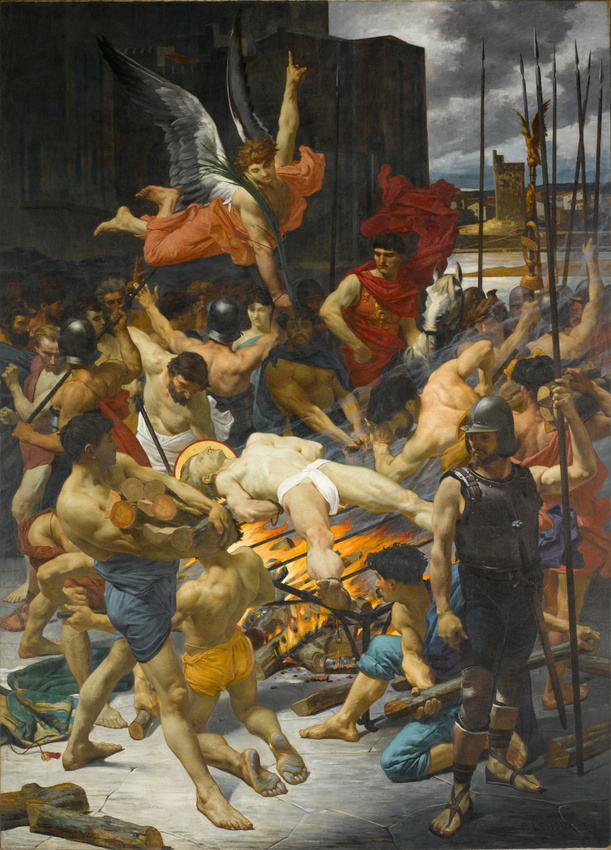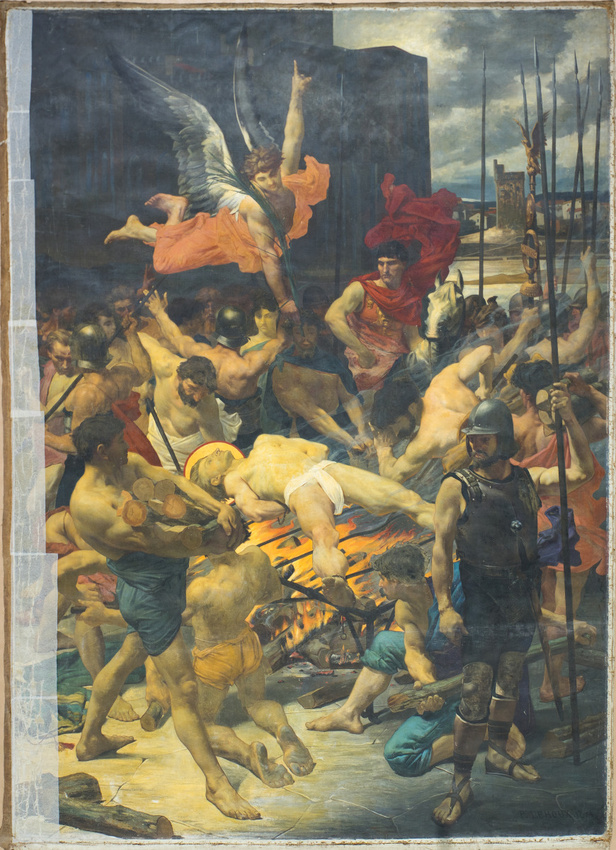Saint Laurent, martyr
Initially, Pierre Lehoux wanted to produce great paintings. So he was naturally attracted to history painting and, unusually, religious history.
David and Goliath, The Martyr of Saint- Etienne, Saint Martin carried up to Heaven by Two Angelswere some of the works that established his reputation.
The detailed treatment of powerful muscles is reminiscent of Michelangelo, whereas the skilful composition of the scene, mainly placing the key elements on a diagonal, is a technique derived from Baroque art.
Just like Joseph Blanc, he infuses his paintings with a strange quality, somewhat Mannerist, by using strident colours.
All these qualities can be found in Saint Lawrence, Martyr. In the 3rd century AD, St. Lawrence, deacon of Rome, was condemned to burn to death on a gridiron prepared with hot coals beneath it for distributing to the poor the riches of the Church coveted by the Emperor Valerian.
During his suffering, an angel brought the saint a palm branch, the symbol of martyrdom.
Thanks to this ambitious and virtuoso work, Lehoux was awarded the first “Prix du Salon” in 1874. This new award aimed to rekindle interest in history painting among young artists, who had gradually moved towards modern subjects and landscape painting.
However, the painting was difficult to understand; it was criticised for its excess: "the tense poses", "a jumble of foreshortenings [...], a screaming hotchpotch of legs, arms, torsos and heads given shape by a great many muscles, without harmony or dignity".
Although still a young artist, his painting was bought for the Musée du Luxembourg.


